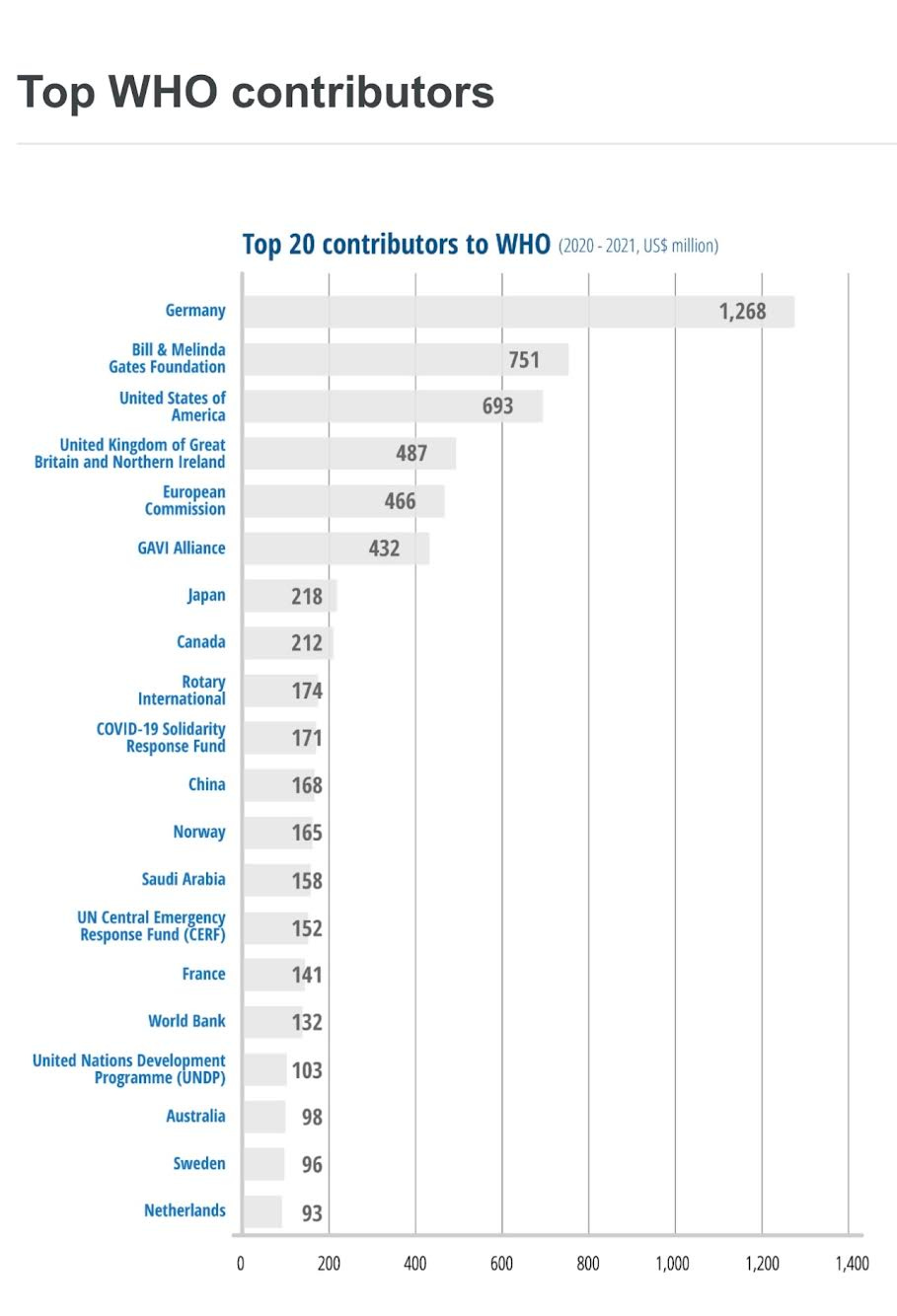To understand the World Health Organization, we must understand the funding. They only have complete control over 1/4 of their budget; the rest comes with ties.
How is WHO funded? The WHO gets funding from member states paying membership dues, alongside additional voluntary donations from member states and other partners like the Bill & Melinda Gates Foundation, GAVI Foundation, Wellcome Trust, etc. Member countries pay “assessed contributions,” a percentage of a country’s GDP agreed upon every two years at the World Health Assembly.
In 2020, these sums covered less than 20% of WHO’s total budget. That means over 80% of WHO’s current funding relies on “voluntary contributions,” meaning any amount of money given freely by donors, whether member states, NGOs, philanthropic organizations, or other private entities. These voluntary contributions are typically earmarked for specific projects or diseases, meaning the WHO cannot freely decide how to use that money.
There is a massive conflict of interest between the agendas of these wealthy donors and NGOs and the "wholesome global health agenda" of the WHO. One might say there are irreconcilable conflicts of interest.




